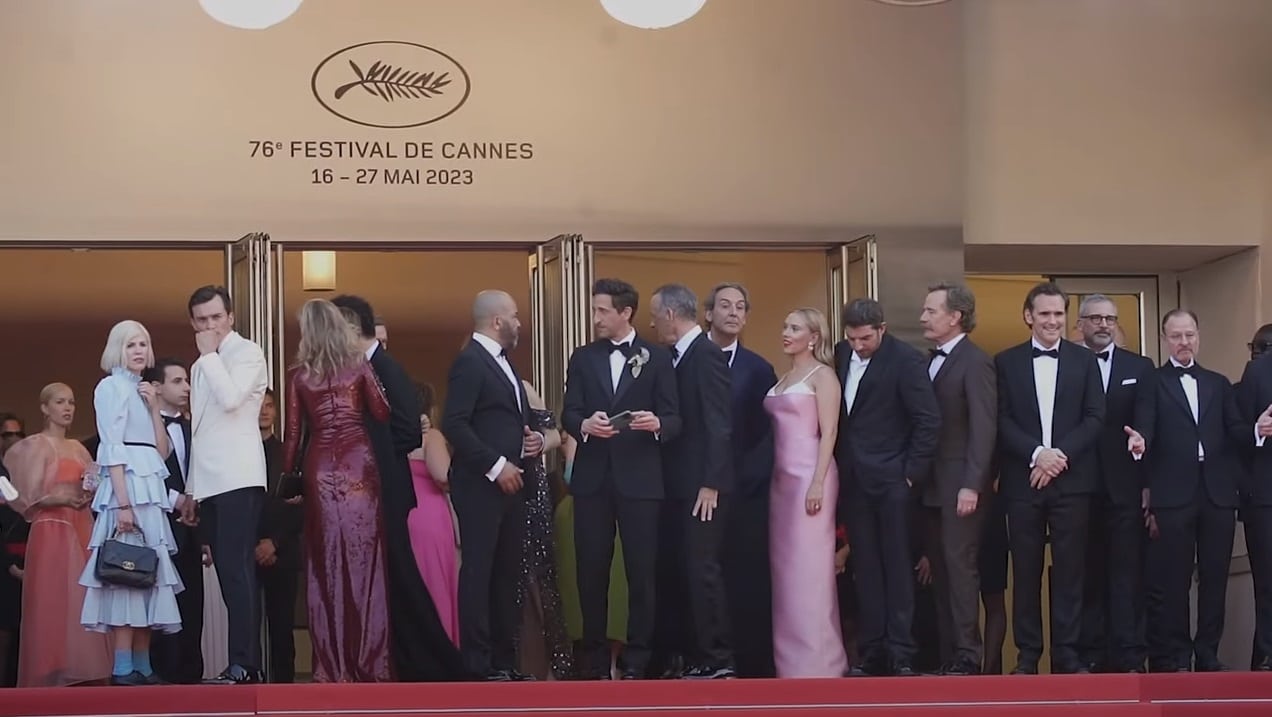 BBC News
BBC NewsBorrowing was £17.4bn last month, the second highest October figure since monthly records began in 1993.

Christopher Jackson
How would you feel, I wonder, if you were a Hollywood star and not in the new Wes Anderson movie? Given the sheer number of stars in this film, it would feel like a grim sidelining. Asteroid City, like his previous movies, boasts an ensemble cast to the point where you can’t quite consider the characters as characters but as the next example of apparently stratospheric celebrity who is seemingly prepared to rush to Mexico, where the film was shot, upending all else, to speak one or two lines of gratuitous whimsy.
What strange creature, I began to wonder, holds this sort of power over Hollywood’s leading actors? But the film’s director Wes Anderson seems unprepossessing enough. One suspects mysterious forces are in play.
Asteroid City stars, for instance, Adrian Brodie, Jason Schwartzman, Scarlett Johansson, Tom Hanks, Edward Norton, Rupert Friend, and Margot Robbie.
But does this, I wonder, represent a slight dip in Anderson’s ability to pull in stars? The Royal Tenenbaums (2001) starred: Danny Glover, Gene Hackman, Anjelica Huston, Bill Murray, Gwyneth Paltrow, Ben Stiller, Luke Wilson, and Owen Wilson.
This sort of casting matters because it makes story secondary to celebrity and art subordinate to fame. As a result, this is a film which tells us more about making films than it does about life. All Anderson’s films are about celebrity if only because every frame of them is populated by famous people: that makes them meta narratives about our obsessions. As such, they’re a pretty good yardstick of how we live now – and that can be both good and bad.
Whimsy, my dictionary tells me, is a 17th century coinage emerging out of the now-forgotten word ‘whim-wham’. It feeds into the idea of caprice, a word which emanates from the Italian ‘capriccio’ – a work of art where a mixture of real and imaginary elements are in play.
It is Anderson’s achievement to have come up with a cinematic language of whimsy which keeps large numbers of people engaged. This form of story-telling – now that he has come up with it – can seem easy to do. First, find a location, and make the set as unsettling as a Magritte painting. Then assemble a cast of characters whose inner life is mysterious but hinted at in tics or oddities. After that, not much needs to happen – and in fact, it would be hard to identify any real dramatic arc in any of his films. Really, they lack meaning.
This used to be considered a sign of artistic failure but in our times it passes as seriousness. Whimsy obviates the communication of shared human problems since it is too restless to concentrate on anything which matters. This is one of the reasons why Wes Anderson’s films have nothing to say about employability, or indeed anything else. It is art for art’s sake taken to the nth degree.
How does he get away with it? Firstly, he speaks to the contemporary moment. These films do reflect us back at ourselves in all our disjointedness and uncertainty. Secondly, the films work very well aesthetically – they are beautifully wrought.
Asteroid City takes place in the middle of the desert where the Junior Stargazer/Space Cadet convention is taking place; the year is 1955. The usual case of misfits assemble. Scarlett Johansson plays an actress Midge Campbell of the Hollywood Golden Age who is nevertheless non-specifically adrift. In fact, everyone is non-specifically adrift. Jason Schwartzman is also in attendance playing war photojournalist Augie Steenbeck. Augie is travelling with his three daughters but their car breaks down. It is typical of these movies that the car mechanic – a walk-on part – needs to be played by a household name in the shape of Matt Dillon.
He calls his father-in-law, Stanley, who quite naturally needs to be played by Tom Hanks. Since it doesn’t matter what happens in a Wes Anderson movie because we don’t care at all about the characters, the film might perhaps have continued in this vein. Instead, the stargazing is interrupted by an alien visiting. The government is alerted and a lockdown ensues.
It is remarkable just how undramatic the alien moment is – in fact, the arrival of an alien doesn’t seem concerning or particularly strange in the context of the broader Anderson method. Nor would it seem odd if an apricot began talking and if Scarlett Johansson fell in love with it. This is the licence of caprice – you can do anything.
But these films bump up in the end against reality. We must concede that apricots don’t talk, and Scarlett Johansson tends not to fall in love with apricots. More broadly, people don’t think, behave, or talk as they do in Wes Anderson movies. These movies are therefore false – and not the less so because they are good light entertainment.
Why are they so popular? It is that the modern world makes us long to escape into fantasy. But in doing that we don’t really escape – we are looking at ourselves. In that sense – and in that sense only – Anderson has created a sort of realist mirror: he reflects our restlessness and our confusion back at us.